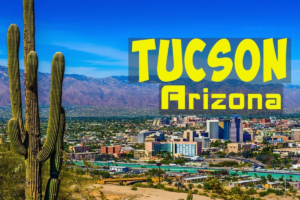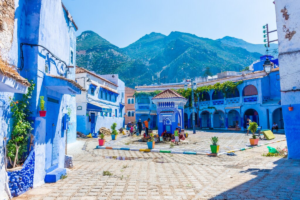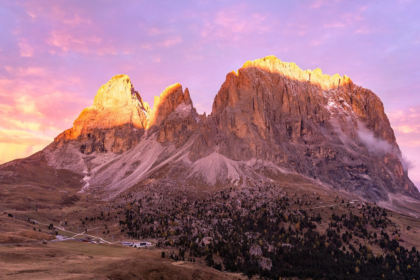1. Dominica
If swimming alongside majestic sperm whales sounds like a dream, Dominica is where it becomes reality. This Caribbean gem has taken a global lead in marine conservation by launching the world’s first dedicated sperm whale reserve—a pioneering move in sustainable and regenerative tourism. With limited permits issued for whale encounters, visitors can share the ocean with these gentle giants in an experience that’s both unforgettable and environmentally conscious. These interactions support scientific research and empower local communities with long-term eco-tourism opportunities.
In 2025, Dominica is stepping confidently into the spotlight with upgraded visitor experiences and infrastructure. Digital immigration forms will streamline arrivals, while a stunning new cable car will transport guests from the lush Roseau Valley up to Boiling Lake—one of Earth’s largest geothermal wonders. Access is more convenient than ever, with new direct flights from Newark on United Airlines (beginning February 15) joining the existing Miami route on American Airlines.
To accommodate growing interest, nearly 500 new hotel rooms are being added this year—a 25% boost in total capacity. Among the highlights: the debut of the ultra-luxurious Hilton Tranquility Beach Resort and Spa in Salisbury. For travelers craving seclusion and sustainability, the award-winning Secret Bay remains a top-tier option with its eco-luxe accommodations.

Dominica also plays host to Project CETI (Cetacean Translation Initiative), a groundbreaking mission to interpret sperm whale communication. Led by National Geographic Explorer David Gruber, the initiative represents a thrilling frontier in marine science.
Beyond the whales, Dominica dazzles with raw natural beauty: hidden gorges, thunderous waterfalls, and untouched rainforest trails. Savor authentic island flavors at places like Lacou, a beloved farm-to-table restaurant fusing tradition with innovation.
Dominica isn’t just another destination—it’s shaping a future where nature and tourism thrive side by side. A visit here means being part of a movement: one that celebrates biodiversity, uplifts local communities, and protects one of the world’s last truly wild islands for generations to come.
2. Greenland
Vast, wild, and unlike anywhere else on the planet, Greenland is where nature remains untamed and ancient traditions endure. Encompassing over two million square kilometers yet home to fewer than 57,000 people, this enormous island is dominated by towering glaciers, ice-streaked fjords, and dramatic peaks that stretch beyond imagination.
From summer’s midnight sun to winter’s dazzling aurora, Greenland offers a spectrum of unforgettable experiences. Watch humpback whales breach the Arctic waters, trek through silent valleys carved by ice, or glide across snowy landscapes by dog sled under the northern lights. This is a place where each season unlocks a different kind of magic.
Long considered one of the world’s most remote destinations, Greenland is now stepping onto the global stage. The new international airport in Nuuk, the capital, is opening Greenland to a broader world of conscious travelers—and with two more airports coming in 2026, access is only getting easier. But make no mistake: Greenland isn’t seeking mass tourism. It’s embracing a mindful, sustainable approach, rooted in respect for the land and the enduring Inuit culture that defines it.

Travelers arriving in Nuuk will discover a town that fuses modern life with deep heritage. From its historic colonial harbor to contemporary art galleries and cultural centers, the city offers insight and inspiration before venturing out into Greenland’s wild heart. Glamping trips, fishing excursions, and hikes through pristine backcountry all begin here.
Further north, the town of Ilulissat reveals Greenland’s most iconic natural marvel: the Icefjord, a UNESCO World Heritage site where mammoth icebergs drift through Disko Bay in surreal silence. In the south, where Viking ruins lie scattered among verdant hills and sheep farms, the scenery softens into fertile landscapes shaped by both history and resilience.
Greenland has committed to a tourism vision that protects what makes it extraordinary. With a new pledge for responsible travel and legislation ensuring tourism revenue benefits local communities, this Arctic haven invites travelers to become stewards—not just spectators—of its fragile beauty.
Greenland is more than a destination. It’s a frontier—raw, rare, and ready to be explored with intention.
3. Tucson, Arizona, US
In 2025, Tucson is celebrating two remarkable milestones that showcase its enduring spirit and cultural richness. The city turns 250 years old this year, and it’s been 10 years since it became the first U.S. city recognized by UNESCO as a City of Gastronomy—a recognition rooted in thousands of years of agricultural tradition and a vibrant blend of culinary influences.
This anniversary year is a tribute to Tucson’s diverse heritage. Once part of Mexico and shaped for millennia by Native peoples, the city honors its multicultural identity on August 23 with a free community celebration at the Presidio San Agustín del Tucson. Visitors can enjoy live performances featuring traditional Mexican music, folkloric dancing, and stories that reflect the complex cultural threads woven into the city’s foundation.
Long before missions and presidios, this land sustained life through agriculture. Just south of the city, fields around San Xavier del Bac Mission—often called the “White Dove of the Desert”—have been cultivated for over 4,000 years. The Tohono O’odham and their ancestors grew staples like corn, squash, and beans here, laying the groundwork for a food culture that remains strong today.
That connection to the land lives on at Tucson’s Heirloom Farmers Markets, where heritage ingredients such as chiltepín chiles, nopales, and prickly pear still thrive. Local chefs, many of them at UNESCO-certified restaurants, carry these traditions forward with dishes that blend Indigenous, Mexican, and regional flavors in ways both timeless and contemporary.
Tucson’s culinary legacy is part of a broader commitment to sustainability. This year, the city will be honored with a Sustainability Index Award from the Global Destination Sustainability Movement (GDS)—a recognition of its efforts to protect historic landmarks, champion green practices, and ensure that tourism supports local communities.
Beyond its cuisine, Tucson offers endless opportunities for exploration. Hike through rugged desert landscapes, wander through historic neighborhoods, or immerse yourself in the local arts scene—all set against the sunlit backdrop of the Sonoran Desert.
Tucson in 2025 isn’t just marking an anniversary—it’s inviting the world to experience a city where ancient traditions and forward-thinking sustainability come together in truly flavorful harmony.
4. Panama
In 2025, Panama marks a major milestone—25 years since regaining full control of the Panama Canal, a monumental event in the nation’s modern history. First envisioned and then transferred by treaty under U.S. President Jimmy Carter in 1977, the canal officially came under Panamanian sovereignty at the close of 1999. Now, a quarter-century later, this iconic waterway remains a powerful symbol of independence and global relevance. The Museo del Canal in Panama City is commemorating the occasion with new permanent exhibitions that trace the canal’s transformation from foreign asset to national treasure.
But the country’s story stretches far beyond the locks and cargo ships.
Panama is also a land of untamed rainforests, misty mountain ranges, and paradisiacal islands, inviting visitors to discover its cultural heartbeat and natural wonders. In 2024, a new initiative—the Meaningful Travel Map to Panama—was launched in partnership with Tourism Cares, designed to help travelers connect with locally led experiences that empower communities and preserve traditions.
In Panama City, a walking tour with Localinpty offers an immersive introduction to the layered history and resilience of the Casco Antiguo and El Chorrillo neighborhoods. These experiences go beyond sightseeing—they tell the story of Panama through the voices of those who live it every day.
Beyond the city, the journey continues to La Pintada, where artisans keep alive the UNESCO-recognized craft of weaving sombrero pintao—traditional Panama hats crafted by hand from natural fibers. These hats, distinct from the more famous Ecuadorian variety, are an enduring symbol of local identity and artistry.
In the highlands of El Valle de Antón, one of the Best Tourism Villages of 2024 according to UN Tourism, adventurers can trek the Cerro Gaital Lookout Trail, a recently opened path through cloud forest where, on a clear day, both the Pacific Ocean and Caribbean Sea reveal themselves from the summit. This route is part of the country’s ambitious 1,000 km of Trails project, aimed at growing sustainable tourism in rural areas while offering travelers front-row access to the extraordinary biodiversity that defines Panama’s landscapes.
From cultural preservation to eco-tourism innovation, Panama in 2025 is not just celebrating its history—it’s carving out a future where travelers, communities, and nature thrive together.
5. Rif Mountains, Morocco
With its snowcapped peaks, golden deserts, labyrinthine medinas, and centuries-old traditions, Morocco has long been a jewel of North African travel. But after the Al Haouz earthquake of September 2023, the country faced the dual challenge of rebuilding infrastructure and rekindling its vital tourism industry. Now, as Morocco looks toward the 2030 FIFA World Cup, which it will co-host, the nation is undergoing a quiet transformation—modernizing transport, preserving cultural landmarks, and aiming to double its visitor numbers in the coming years.
For travelers seeking something beyond the usual Marrakech-to-Sahara route, northern Morocco offers a less-trodden path filled with dramatic mountain roads, sacred villages, and a rich fusion of Arab, Amazigh, and Andalusian culture.
Start in Fez, a city where history is not frozen in time but lived in daily. Within its UNESCO-listed medina, artisans still hand-dye leather in ancient tanneries and spiritual rhythms echo from centuries-old madrasas. Fez will also be a host city for the 2025 Africa Cup of Nations, adding a contemporary energy to its historic streets. A planned high-speed rail extension from Rabat to Fez—part of Morocco’s ambitious HSR network upgrade—promises to make this city even more accessible.

From Fez, venture into the Rif Mountains, a route where time slows and landscapes shift. Drive north to Moulay Idriss, a hilltop pilgrimage site once closed to outsiders, where whitewashed houses cling to steep hillsides and olive groves stretch across the valleys. Nearby lies Ouezzane, a spiritual heartland of Sufi Islam, offering quiet reflection and an authentic sense of Moroccan religious life.
Nature takes center stage in Talassemtane National Park, where hiking trails wind through fragrant cedar forests, red cliffs tower above gorges, and crystalline streams offer secluded swimming spots. This park is a hidden haven for those who crave immersion in Morocco’s wild side.
A short drive away, the dreamy blue-hued town of Chefchaouen welcomes visitors with cobbled alleys, handwoven textiles, and panoramic views of the Rif peaks. Its relaxed pace and visual charm make it a favorite for artists, hikers, and photographers alike.
Wrap up the journey by tracing the Mediterranean coastline, where peaceful fishing villages like El Jebha and the historic seaside city of Tetouan showcase Morocco’s coastal serenity. With its Spanish colonial architecture and thriving artisan quarters, Tetouan acts as a cultural bridge between Europe and Africa.
In 2025, Morocco is not just rebuilding—it’s reimagining its future. And in the north, far from the tour-bus circuits, travelers will find stories of endurance, cultural pride, and natural splendor waiting to unfold.






